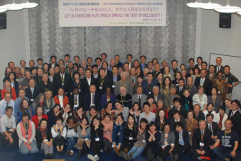
The grave of a Catholic priest who died in captivity in Japan more than 300 years ago has been identified, according to Japanese authorities.
Giovanni Battista Sidotti had asked Pope Clement XI to visit Japan in 1708, Vatican Radio reported. Japan had banned Christianity in the 1630s, as its rapid growth following the first missionary trip there in 1608 appeared to threaten those in power.
Sidotti had been arrested shortly after arriving, having been discovered despite attempts to disguise himself in a samuri suit. Though some Japanese friends had tried to get mercy for the priest, and had succeeded in arranging for his deportation, Sidotti's continued attempts to convert his guards meant he was kept imprisoned and died there in 1714 at the age of 46.

He had been arrested under the Tokugawa Shogunate feudal regime that was in power at the time.
The National Museum of Nature and Science in Japan tested the DNA of the skeleton found in Tokyo's Bunkyo ward and discovered that it was of an Italian male of the expected height and age, according to Asahi Shimbun, a Japanese newspaper. Documents at the house where he was found, which had been known as the 'Christian mansion', recorded his name and tallied with what was found at the grave.
The house had been built for the purpose of detaining Christians who entered the country. At the time, Japan thought that Christian missionaries heralded Western military intervention.
















